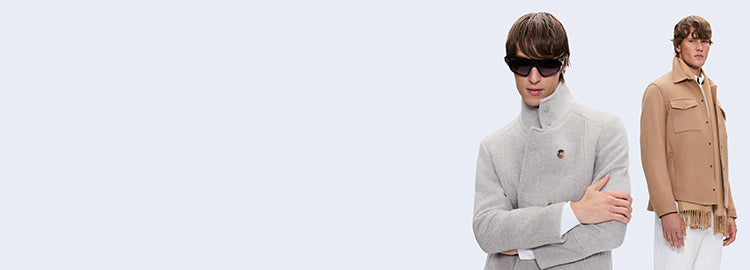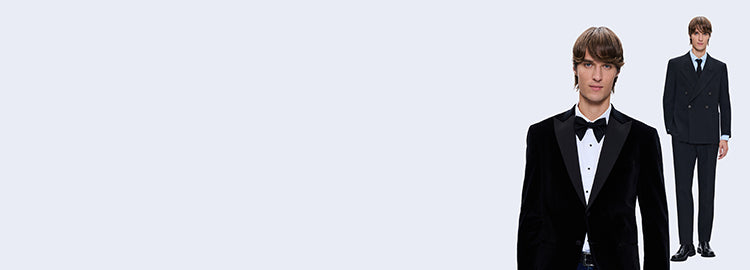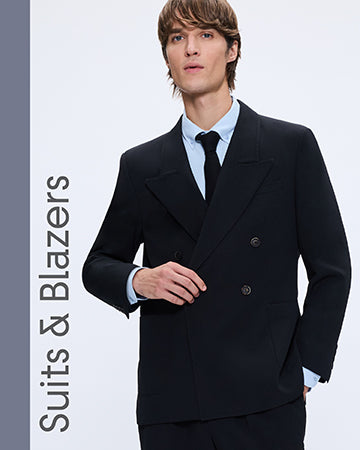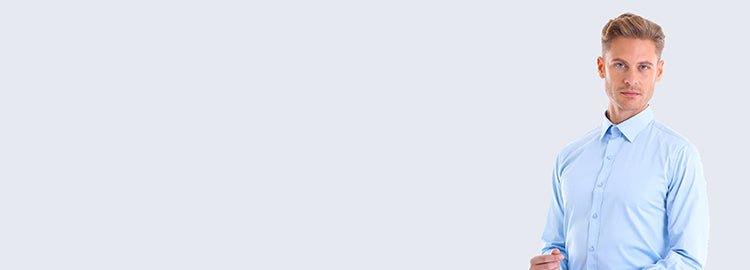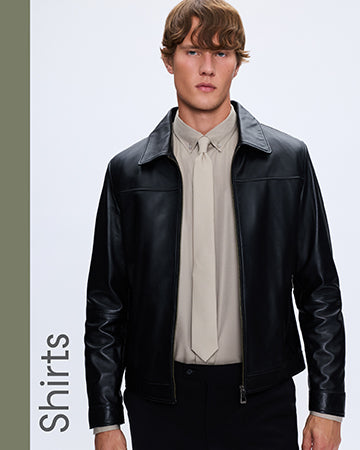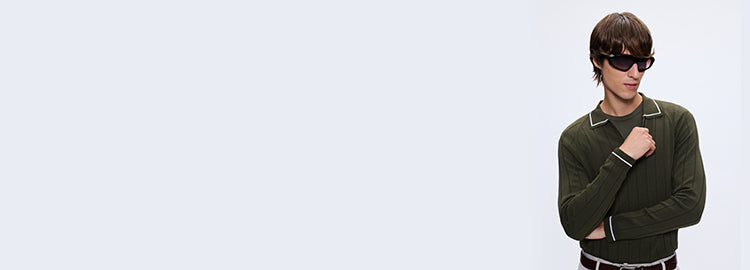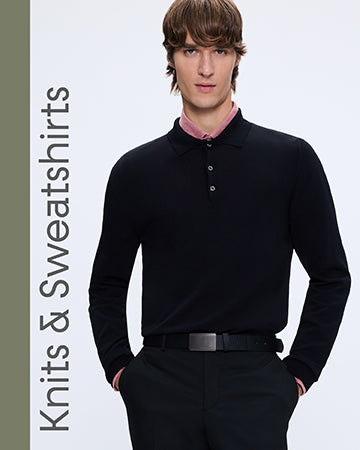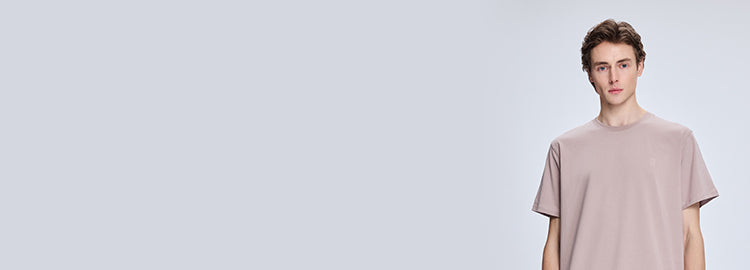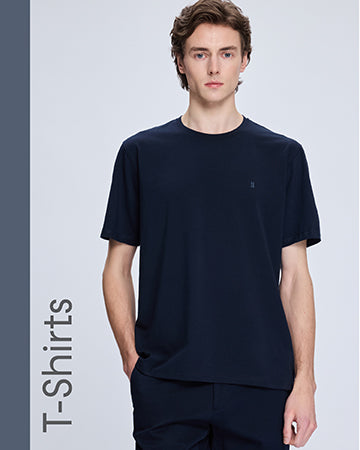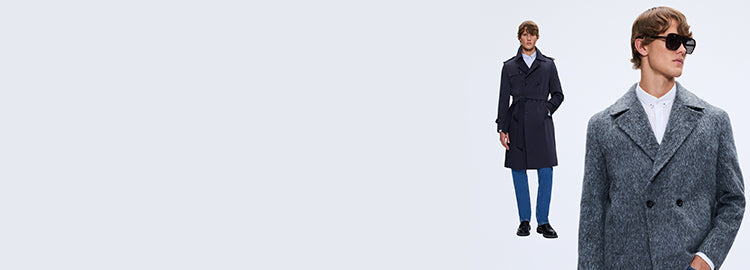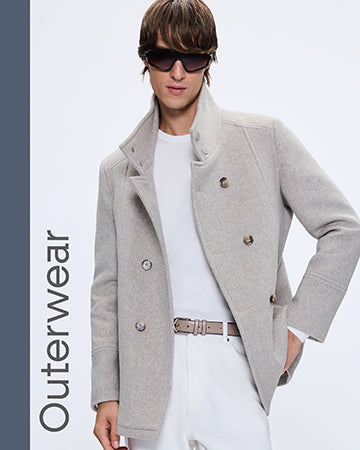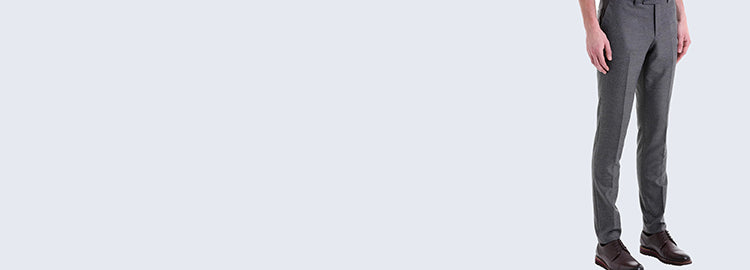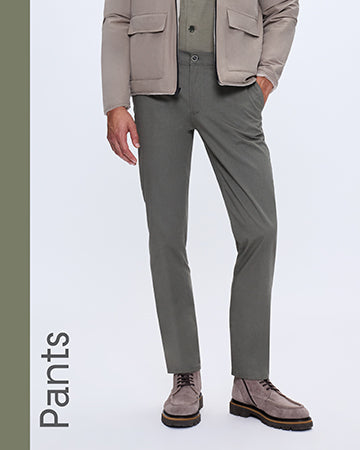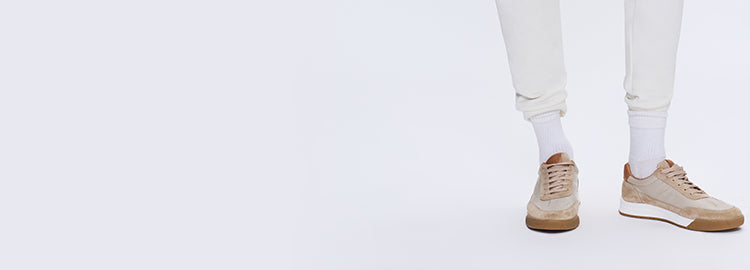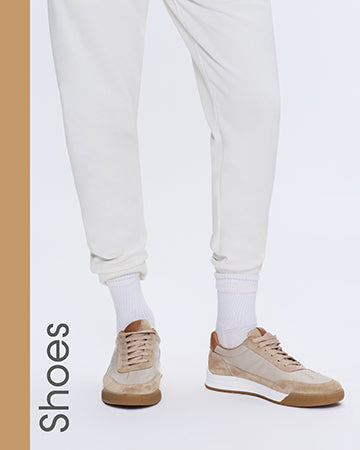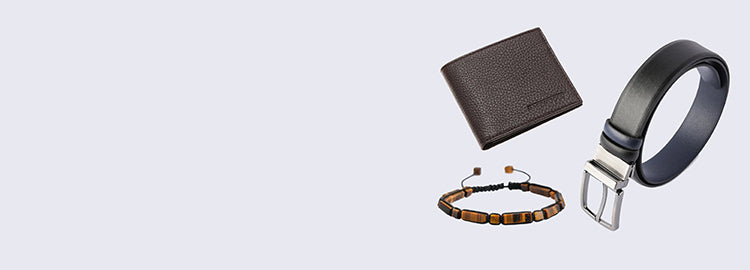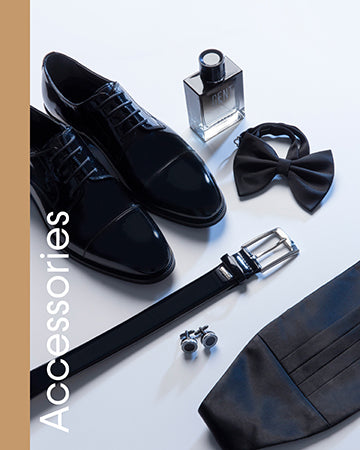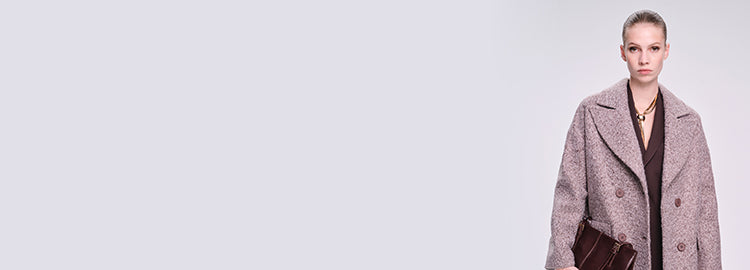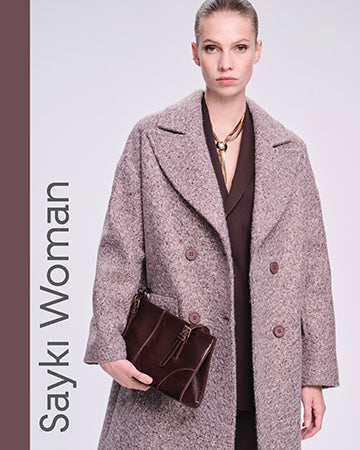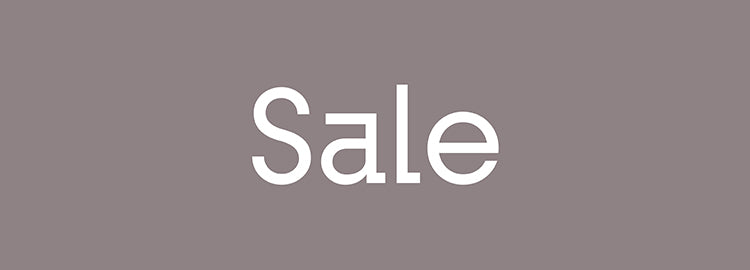Stepping into a wedding reception or formal evening event with the invitation reading "cocktail attire" can feel like decoding a style puzzle. Too casual, and you'll look underdressed. Too formal, and you risk appearing out of touch. Getting it right means striking that sweet spot between polished professionalism and relaxed elegance.
This guide breaks down everything you need to know about men's cocktail attire—from the foundation pieces to the finishing touches that transform a good outfit into a great one.
Contents
What Is Cocktail Attire?
Cocktail attire represents semi-formal dressing at its finest. Born in the 1920s and 30s during the rise of cocktail parties, this dress code originally served as a middle ground between day wear and full evening dress. Today, it remains one of the most common requests on invitations for weddings, galas, upscale dinners, and corporate celebrations.
The essence lies in looking refined without the rigidity of black-tie formality. Think tailored men's suits in sophisticated colors, crisp dress shirts, and polished leather shoes. You're aiming for an appearance that shows respect for the occasion while allowing your personal style to shine through.

Where It Sits Among Dress Codes
Understanding where cocktail attire falls in the formality spectrum helps clarify what works and what doesn't:
Smart Casual sits at the relaxed end—you might see chinos paired with a blazer, no tie required, and loafers instead of oxfords. Think Friday office attire elevated slightly.
Cocktail Attire raises the bar considerably. A full suit becomes essential, ties are expected in most settings, and shoe choices lean toward formal leather styles. The overall impression should feel deliberate and well-considered.
Black Tie represents peak formality, requiring tuxedos, bow ties, patent leather shoes, and specific accessories. It's reserved for galas, formal weddings, and high-society events.
Cocktail attire lives comfortably between the last two—formal enough to command respect, flexible enough to accommodate personal expression.
Core Outfit Components
Building the right cocktail attire outfit starts with understanding each essential element and how they work together.
The Suit
Your suit forms the foundation of any cocktail attire ensemble. The right choice depends on understanding color, pattern, and fabric.
Color Selection: Navy and charcoal gray remain timeless choices that work across virtually every cocktail setting. Medium grays offer versatility for both day and evening events. Lighter shades like tan or light gray work beautifully for spring and summer celebrations, particularly outdoor weddings. Darker options—think deep navy, charcoal, or even black—suit evening affairs and cooler months.
Pattern Considerations: Solid colors provide the safest route, especially for first-time cocktail attire wearers. Subtle pinstripes add visual interest without overwhelming the outfit. Micro-checks or herringbone weaves introduce texture that catches light beautifully in evening settings. Reserve bolder patterns for situations where you know the crowd skews fashion-forward.
Fabric Weight and Texture: Wool remains the gold standard for its breathability and natural drape. Wool-blend fabrics offer durability and wrinkle resistance for travel-heavy events. Lighter-weight wools or wool-linen blends help manage heat during warmer months. Textured fabrics like flannel, tweed, or subtle herringbone add depth to fall and winter outfits.
The fit matters as much as the fabric. Your blazers & jackets should sit smoothly across the shoulders without pulling or excessive fabric bunching.
The Shirt
The shirt you choose beneath your suit jacket can elevate or undermine your entire look.
Collar Styles: Spread collars offer a modern, balanced look that accommodates most tie knots. Point collars lean traditional and work beautifully with narrower ties. Button-down collars skew too casual for true cocktail attire—save them for smart casual events.
Fabric and Weave: Poplin provides a smooth, crisp finish that looks sharp under suit jackets. Twill weaves offer durability and a subtle texture. Royal oxford brings a refined texture that bridges casual and formal beautifully.
Color Choices: White shirts remain the most versatile and formal option, working with any suit color and tie combination. Light blue brings approachability while maintaining formality. Soft pink or lavender can work for spring and summer events, particularly with navy or gray suits. Patterned shirts rarely work well for cocktail attire—the suit and tie should provide pattern interest.
Keep shirts fitted but comfortable, with enough room to move naturally without excess fabric billowing around your torso.
Neckwear
Ties complete the cocktail attire look, bridging the gap between business formal and evening elegance.
Tie vs. Bow Tie: Standard neckties work for the vast majority of cocktail events. Bow ties bring a vintage-inspired or more formal feel—consider them for evening weddings or when you want to stand out with classic flair. If choosing a bow tie, self-tied versions look infinitely better than pre-tied options.
Width Considerations: Tie width should roughly match lapel width for visual balance. Standard widths range from 2.75 to 3.25 inches for contemporary suits. Slimmer ties work with slim-cut suits and narrow lapels. Wider ties pair with traditional or classic-cut suits.
Knots and Technique: The four-in-hand knot works universally—it's asymmetrical, easy to tie, and suits most collar styles. Half-Windsor knots create a symmetrical, medium-sized knot for spread collars. Full Windsor knots should be reserved for wide-spread collars only, as they create substantial knot volume.
Pattern Selection: Solid ties in complementary or contrasting colors provide foolproof elegance. Subtle diagonal stripes add movement without overwhelming. Small geometric patterns or dots bring visual interest. Avoid novelty patterns, cartoon characters, or overly bold designs.
Footwear
Shoes ground your entire outfit—literally and figuratively. The wrong choice here can undermine even the most carefully assembled cocktail attire.
Oxford Shoes: Cap-toe oxfords represent the most formal option, perfect for evening cocktail events or when you want maximum polish. Plain-toe oxfords offer slightly more versatility while maintaining formality.
Derby Shoes: Slightly less formal than oxfords but entirely appropriate for cocktail attire, particularly day events or outdoor celebrations.
Loafers: Penny loafers or tassel loafers can work for more relaxed cocktail settings, particularly in warmer climates or daytime events. They should be high-quality leather, never suede.
Color Coordination: Black shoes pair with charcoal, black, or navy suits. Brown shoes work beautifully with navy, gray, tan, or earth-toned suits. Burgundy or oxblood offers a sophisticated alternative to brown.
Quality matters tremendously here. Invest in genuine leather formal shoes with leather soles when possible. Keep them polished and well-maintained—scuffed shoes instantly downgrade your entire appearance.
Socks & Belt
These details seem minor but create cohesion across your outfit.
Sock Selection: Your socks should match your trousers or shoes—never your shirt or tie. Solid colors work best. Over-the-calf length prevents skin exposure when you sit or cross your legs. Avoid novelty patterns or athletic socks entirely.
Belt Basics: Your belt should match your shoe color and leather type. Width should be proportional to your build—typically 1.25 to 1.5 inches for dress belts. The buckle should be understated—simple, polished metal without excessive ornamentation.
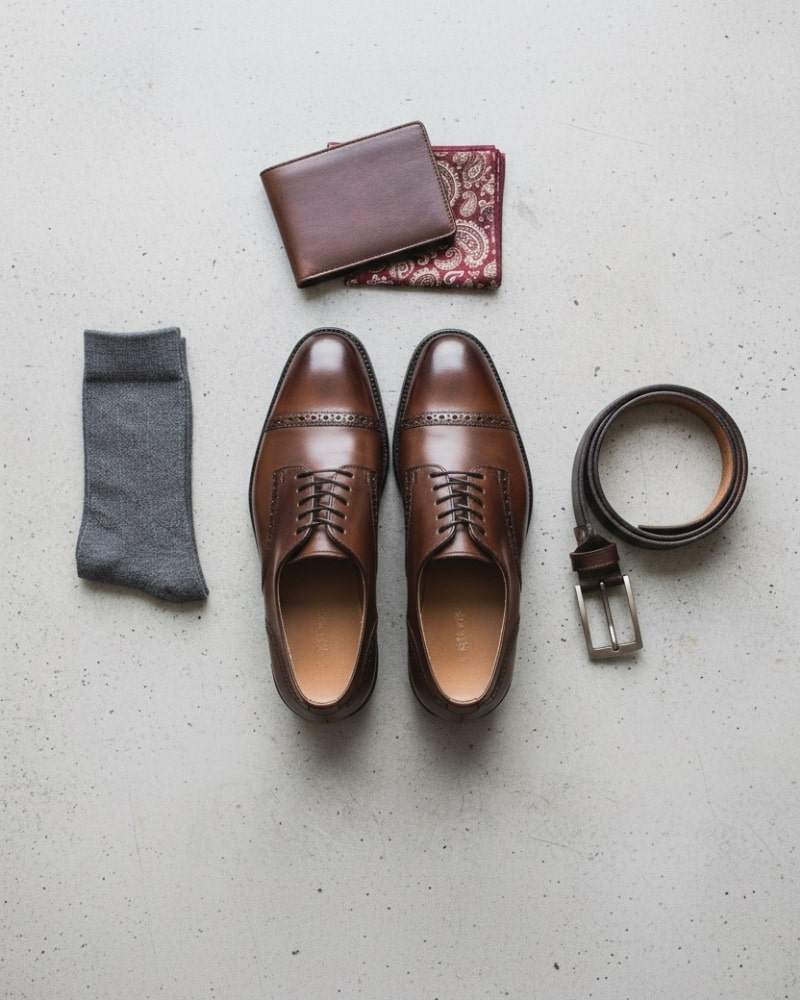
Fit & Tailoring Essentials
Even the finest suit falls flat without proper fit. Understanding key fit points transforms off-the-rack pieces into custom-looking garments.
Jacket Length, Shoulder, Sleeve & Trouser Break
Jacket Length: The jacket hem should cover your seat and reach roughly to where your fingers curl when your arms hang naturally. Too short looks juvenile; too long drowns your frame.
Shoulder Fit: The shoulder seam should end precisely where your shoulder does—no divots, no overhang. This is the hardest alteration to fix, so get it right from the start.
Sleeve Length: Jacket sleeves should end at your wrist bone, revealing about a half-inch of shirt cuff. This small detail signals attention to fit.
Trouser Break: The break refers to how trousers rest on your shoes. A slight break (one small fold at the shoe) works for most cocktail settings. No break (trousers just touching the shoe) creates a modern, clean line. Avoid excessive break—multiple folds look sloppy.
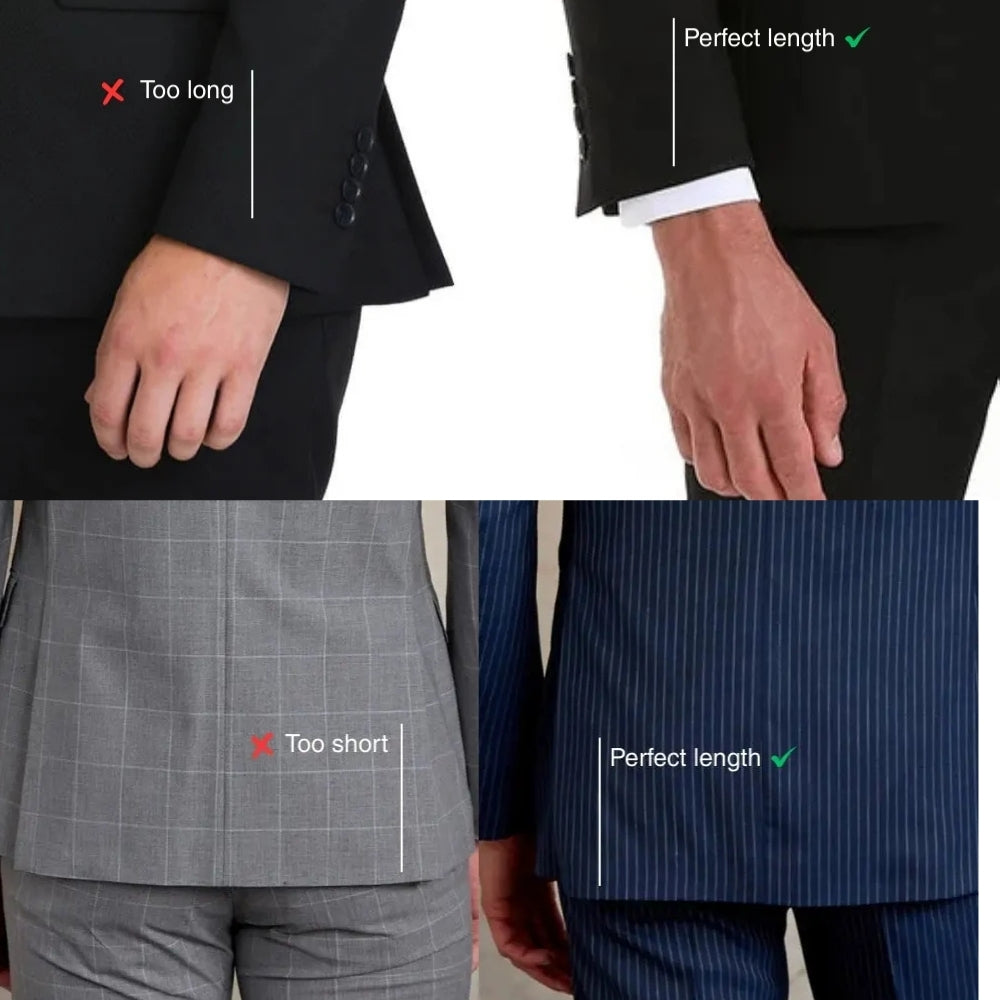
Quick Alterations That Elevate the Look
Hem the Trousers: This basic alteration ensures proper length and eliminates the baggy, off-the-rack appearance.
Taper the Trouser Leg: Modern cuts slim through the leg without being skin-tight. A skilled tailor can adjust the leg opening for a cleaner silhouette.
Take In the Waist: Jackets and trousers that fit properly through the waist create a sharp, intentional look rather than appearing borrowed.
Shorten the Sleeves: This quick fix ensures proper cuff exposure and signals that the suit was made for you.
Suppress the Waist: Tailoring the jacket to follow your natural waist creates shape and structure, particularly beneficial for slimmer builds.
Even modest tailoring investments dramatically improve how off-the-rack suits look and feel.
Color & Fabric Play by Season
Adapting your cocktail attire to the season shows sophistication and awareness.
Spring–Summer
Lighter Hues: Tan, light gray, and pale blue suits feel appropriate for warmer months. Cream or ivory shirts provide alternatives to stark white. Ties in coral, mint, or sky blue introduce seasonal color.
Breathable Fabrics: Lightweight wool, wool-linen blends, and tropical-weight fabrics prevent overheating. Unlined or half-lined jackets reduce bulk and improve airflow. Cotton or linen-blend shirts wick moisture better than synthetic materials.
Texture Choices: Seersucker brings classic summer style, though it leans slightly more casual. Hopsack or fresco weaves offer texture with excellent breathability.
Fall–Winter
Darker Palettes: Charcoal, navy, deep brown, and burgundy suits suit cooler months beautifully. Shirts in white or light blue provide crisp contrast. Ties in rich jewel tones—emerald, sapphire, or burgundy—add depth.
Textured Weaves: Flannel provides warmth without excessive bulk. Tweed offers rich texture and traditional styling. Herringbone and birdseye patterns add subtle visual interest.
Layering Foundations: Heavier fabric weights naturally accommodate layering beneath jackets. Wool or cashmere-blend socks provide warmth. Consider vests for indoor events in temperature-controlled venues.
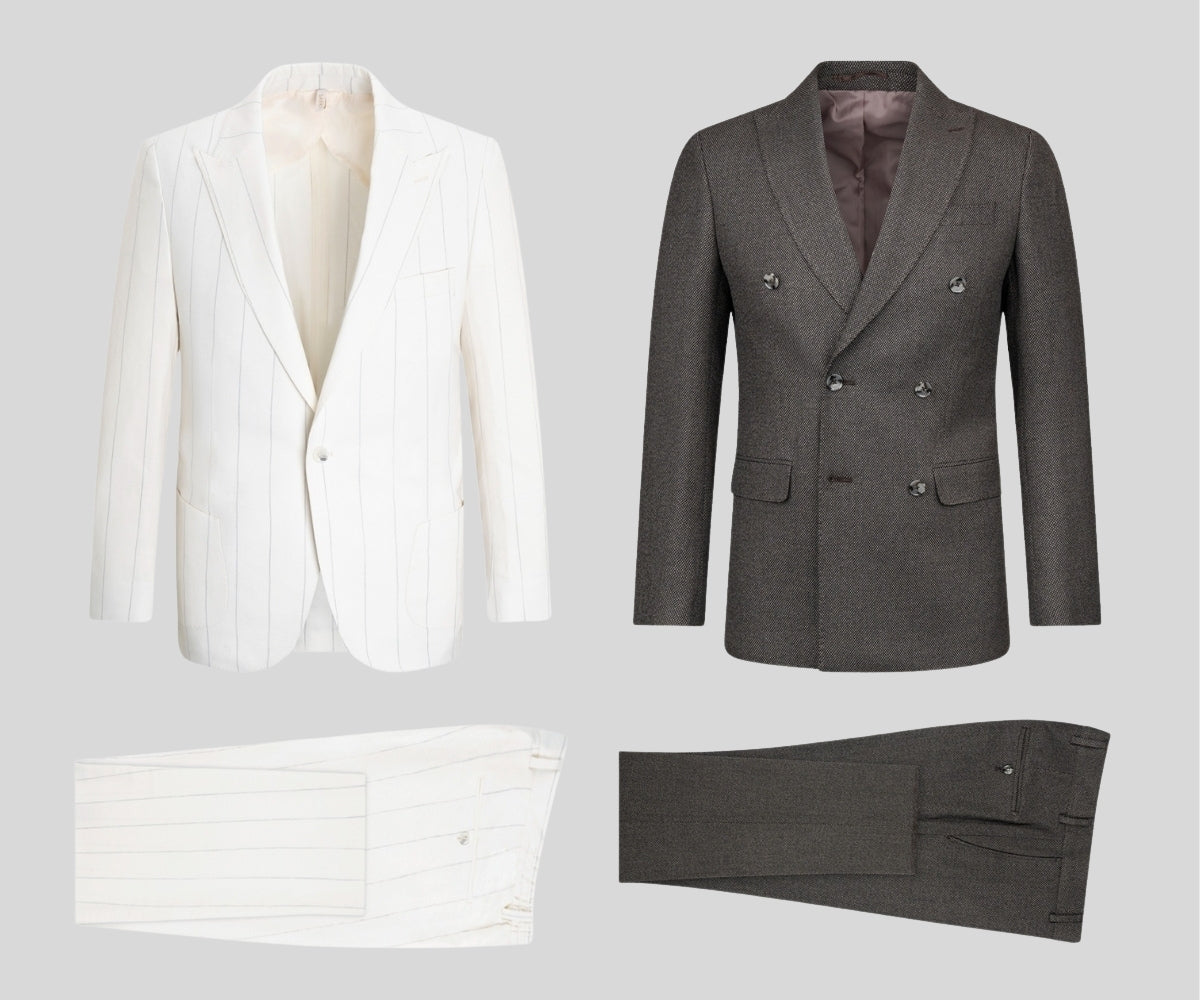
Accessories That Refine
Accessories separate adequate cocktail attire from exceptional style. Used thoughtfully, they add personality without overwhelming the ensemble.
Pocket Squares, Cufflinks, Watches, Minimal Jewelry
Pocket Squares: A folded pocket square adds color and texture to your jacket's breast pocket. The square should complement—not match—your tie. White linen offers timeless elegance for any occasion. Silk squares in complementary colors or subtle patterns bring visual interest. The presidential fold works universally; puff folds add more personality for creative events.
Quality pocket squares elevate even simple suits into refined ensembles.
Cufflinks: Reserve cufflinks for French-cuff shirts at evening cocktail events. Choose classic metal finishes—silver, gold, or rose gold—in simple designs. Knot cufflinks offer casual elegance. Avoid novelty designs or overly large statement pieces.
Watches: A dress watch with a leather strap and simple dial complements cocktail attire beautifully. Keep the case thin and diameter proportional to your wrist. Metal bracelets work but lean slightly more casual. Avoid sport watches, smart watches with bright displays, or overly complicated chronographs.
Minimal Jewelry: A wedding band represents the extent of jewelry for most cocktail settings. If wearing a ring beyond a wedding band, keep it subtle and on one hand only. Skip necklaces, bracelets, and earrings unless the event explicitly skews fashion-forward.
Discreet Fragrance & Grooming Notes
Fragrance Application: Apply cologne to pulse points—wrists and neck—about 30 minutes before the event. Two to three sprays maximum; scent should be discovered, not announced. Choose fresh, woody, or citrus-based fragrances rather than heavy or overpowering options.
Grooming Fundamentals: Hair should be clean, styled, and neat. Facial hair—if worn—should be trimmed and shaped. Nails should be clean and trimmed. These basics signal respect for the occasion and guests.
Exploring men's accessories reveals how small details create cohesive, polished looks.
Wedding & Event-Specific Guidance
Different events call for nuanced approaches to cocktail attire.
Day vs. Evening Cocktail Attire
Daytime Events: Lighter suit colors work beautifully in natural light. Brown or tan leather shoes feel appropriate. Ties in brighter or lighter colors suit the cheerful atmosphere. The overall vibe can lean slightly more relaxed while maintaining polish.
Evening Events: Darker suit colors—navy, charcoal, or black—suit artificial lighting and formal atmosphere. Black leather shoes become the preferred choice. Ties in deeper, richer colors complement evening elegance. The overall impression should lean more formal and refined.
Venue Formality
Hotel or Ballroom: Traditional cocktail attire applies fully here. Lean formal with your choices—darker suits, crisp white shirts, polished black shoes.
Garden or Outdoor: Lighter colors and fabrics make sense. Brown shoes work beautifully. Consider the ground surface when selecting shoes—stiletto heels sink into grass, and the same practical thinking applies to shoe sole choice.
Beach or Waterfront: The most relaxed cocktail setting. Lighter suits, even in tan or light blue, feel appropriate. Loafers can work here. Consider fabric weight carefully—you'll want breathability.
Reading the Invitation & Host Cues
Invitations often provide subtle guidance beyond the dress code line. Venue choice signals formality level. Evening start times suggest more formal attire than afternoon events. Black and white invitations typically indicate more traditional expectations.
When in doubt, reach out to the host or consult the event website for additional guidance. Arriving slightly overdressed beats underdressed every time.
For wedding-specific cocktail attire, exploring wedding suits for men provides curated options designed for celebratory formality.
Modern Style Variations
Cocktail attire allows for personal interpretation within its semi-formal framework. These formulas provide starting points for different style preferences.
Classic & Timeless Formula
The Foundation: Navy or charcoal suit in traditional cut with notch lapels. White dress shirt with spread collar. Silk tie in burgundy, navy, or subtle pattern. Black cap-toe oxfords. Simple leather belt matching shoes. White linen pocket square in presidential fold.
Why It Works: This combination has looked appropriate for decades and will continue to do so. It signals respect for tradition without appearing dated. Perfect for conservative settings, corporate events, or when you're unsure about the crowd's style preferences.
Contemporary Business-leaning Formula
The Foundation: Medium gray or navy suit in modern slim fit. Light blue dress shirt. Skinny or slim tie in solid color or micro-pattern. Dark brown or burgundy leather oxfords. Complementary leather belt. Subtle pocket square in coordinating color.
Why It Works: This approach bridges professional environments and social events seamlessly. The slimmer silhouette and contemporary color palette feel current without chasing trends. Ideal for young professionals, networking events, or modern weddings.
Fashion-Forward Statement Formula
The Foundation: Burgundy, forest green, or patterned suit in well-fitted cut. White or light pink dress shirt. Bold tie with interesting texture or pattern—or skip the tie entirely for evening events. Unique leather shoes—perhaps brogues or monk straps. Statement pocket square with personality. Interesting cufflinks or lapel pin.
Why It Works: For those confident in their style sensibilities, this formula stands out while remaining appropriate. It requires understanding your audience—creative industry events, fashion-conscious crowds, or celebrations where personality is encouraged.
Minimalist Monochrome Formula
The Foundation: All-navy or all-charcoal outfit—suit, shirt in darker shade, tonal tie. Black shoes and belt. No pocket square or extremely subtle white one. Clean, streamlined aesthetic.
Why It Works: The monochrome approach creates striking visual cohesion and appears intentionally styled. It works beautifully for evening events, modern venues, or when you want to make an impact through restraint rather than embellishment.
Seasonal & Climate Considerations
Temperature and weather require practical adjustments to maintain both comfort and style.
Heat Management
Unlined Jackets: Half-lined or unlined suit jackets reduce insulation and improve breathability dramatically. They're particularly valuable for outdoor summer events or warm-climate celebrations.
Loafer Alternatives: Slip-on loafers provide easier wear and slightly better ventilation than laced oxfords. They work for more relaxed cocktail settings, particularly during daytime or outdoor events.
No-Show Socks: These provide the hygiene and comfort benefits of socks while creating the visual effect of going sockless. They prevent blisters and moisture issues while maintaining a clean ankle line with loafers or low-cut shoes.
Fabric Choices: Lightweight wool, linen-blend, or tropical-weight fabrics make substantial comfort differences. Some suit fabrics specifically incorporate moisture-wicking or cooling technologies.
Strategic Timing: If possible, arrive just before the event starts rather than standing outside in the heat. Many formal events provide air-conditioned spaces where you'll quickly cool down.
Cold-Weather Layering
Topcoats: A wool or cashmere overcoat in charcoal, navy, or camel provides warmth without compromising the suit underneath. Ensure the coat is long enough to cover the suit jacket completely. Single-breasted topcoats work universally; double-breasted styles suit taller builds.
Scarves: Wool or cashmere scarves add warmth and a touch of elegance. Choose solid colors or subtle patterns that complement your suit and overcoat. Avoid bulky knits or overly casual styles.
Gloves: Leather gloves in black or brown finish the cold-weather look. They're particularly important if you'll be outside for photos or moving between venues.
Layering Beneath: A thin merino wool undershirt provides insulation without adding visible bulk. Wool-blend dress socks in over-the-calf length prevent cold ankles.
Outerwear That Works With Cocktail Attire
Protecting your carefully assembled outfit from weather requires appropriate outerwear choices.
Coats, Rainwear & Umbrellas
Overcoats: Wool overcoats in classic cuts remain the gold standard for cold weather. Chesterfield coats offer timeless elegance with their velvet collars. Car coats provide a shorter, more contemporary option. Ensure the coat fits over your suit jacket without pulling or restricting movement.
Rainwear: A tailored rain coat in dark colors protects against precipitation while maintaining formality. Trench coats in khaki or navy work beautifully over suits. Avoid athletic or overly casual rain jackets.
Umbrellas: A full-size, solid-color umbrella complements formal attire better than compact or novelty versions. Black or navy options work universally. Automatic-open mechanisms provide convenience without sacrificing style.
Practical Considerations: Check coat rooms or valet services at venues. If carrying your coat during the event, fold it carefully over your arm rather than draping it over chairs. Remove outerwear before entering the main event space.

Grooming & Finishing Touches
Physical presentation matters as much as clothing choices. These final details complete the cocktail attire package.
Hair, Facial Hair, Nails, Wrinkle Care, Lint
Hair: Clean, styled hair shows basic respect for the occasion. Get a fresh cut about a week before the event—this allows time for the cut to settle naturally. Use appropriate styling products for hold without looking overly groomed or stiff.
Facial Hair: Clean-shaven remains the most traditional choice for cocktail events. If wearing a beard or mustache, trim and shape it within a day of the event. Keep neck lines clean and edges defined.
Nails: Clean, trimmed nails signal attention to detail. If you bite your nails, consider stopping well before the event or getting a basic manicure. Fingernails and cuticles should look maintained, not manicured in an obvious way.
Wrinkle Care: Steam or iron your shirt and suit the day of the event. Hang your suit in the bathroom while showering—the steam releases minor wrinkles. Bring a small steamer or wrinkle-release spray if traveling to the event.
Lint Removal: Use a lint roller on your suit before leaving. Pay particular attention to shoulders, lapels, and back. Keep a portable lint roller in your car or bag for last-minute touch-ups.
Shoe Shine: Polish shoes the night before to allow time for the polish to set properly. Buff to an appropriate shine—high gloss for evening events, subtle shine for daytime affairs.
Fragrance Timing: Apply cologne 30 minutes before leaving, allowing the top notes to settle. This prevents overwhelming scent when you first arrive.
What Not to Wear
Understanding what to avoid prevents common cocktail attire mistakes.
Sneakers, Casual Denim, Loud Logos, Overly Flashy Pieces
Sneakers: Regardless of how expensive or fashionable, sneakers remain too casual for cocktail attire. This includes "dress sneakers" or luxury athletic shoes. The formality level requires leather dress shoes—no exceptions.
Casual Denim: Jeans, even dark designer denim, fall below cocktail attire standards. Denim jackets, shirts, or any denim element should be avoided entirely.
Loud Logos: Visible brand names, large logos, or conspicuous branding look out of place at cocktail events. This extends to ties with repeated logo patterns, belts with oversized branded buckles, or shirts with visible designer labels.
Overly Flashy Pieces: Cocktail attire rewards subtle sophistication over attention-grabbing elements. Avoid metallic suits, shirts in electric colors, ties with cartoon characters, novelty cufflinks, or anything that prioritizes humor over elegance.
Athletic Elements: Fitness watches, athletic socks visible above shoes, sport coats instead of suit jackets, or performance fabrics undermine the formal aesthetic.
Inappropriate Accessories: Baseball caps, backpacks, athletic bags, or casual watches don't belong. Bring a leather portfolio or clutch if you need to carry items.
Overly Casual Shoes: Boat shoes, driving moccasins, Chelsea boots (typically too casual), or any suede footwear should be avoided unless you're absolutely certain the event leans very casual.
Body Type & Proportion Tips
Cocktail attire works for every build when you understand proportion and fit.
Lapel Width, Trouser Rise, Pleats, Silhouette Balance
Lapel Width for Different Builds:
Broader shoulders and larger frames carry wider lapels (3 to 3.5 inches) with better proportion. The width creates visual balance across the chest.
Slimmer builds look better with narrower lapels (2.5 to 3 inches). This prevents the jacket from overwhelming your frame.
Average builds have flexibility—standard 3-inch lapels work beautifully and offer the most versatile styling options.
Trouser Rise Considerations:
Longer torsos benefit from lower-rise trousers, which create the illusion of shorter torso and longer legs.
Shorter torsos look better with mid to higher-rise trousers. These extend the leg line and balance proportions.
The trouser waistband should sit comfortably at your natural waist (where you bend sideways) rather than hanging low on the hips.
Pleats vs. Flat Front:
Pleated trousers add volume through the hip and thigh area. They work well for athletic builds or those carrying weight in the midsection, as they allow for movement without pulling.
Flat-front trousers create cleaner lines and suit slimmer builds beautifully. They offer a more contemporary aesthetic.
Forward pleats angle toward the fly and create a dressier look. Reverse pleats angle toward the pockets and offer a more relaxed appearance.
Silhouette Balance:
Taller men can wear longer jackets without looking disproportionate. Fuller breaks on trousers also work well.
Shorter men should opt for slightly shorter jacket lengths and minimal trouser break. This creates the illusion of longer legs and better overall proportion.
Heavier builds benefit from single-breasted jackets with subtle waist suppression. Avoid excessively tight fits that pull or create stress points.
Slim builds can explore more dramatic waist suppression in jackets. Avoid oversized cuts that create a borrowed-suit appearance.
Stripe and Pattern Strategy:
Vertical pinstripes elongate the silhouette, benefiting shorter or heavier builds.
Horizontal patterns or checks can add visual width—use strategically based on your frame.
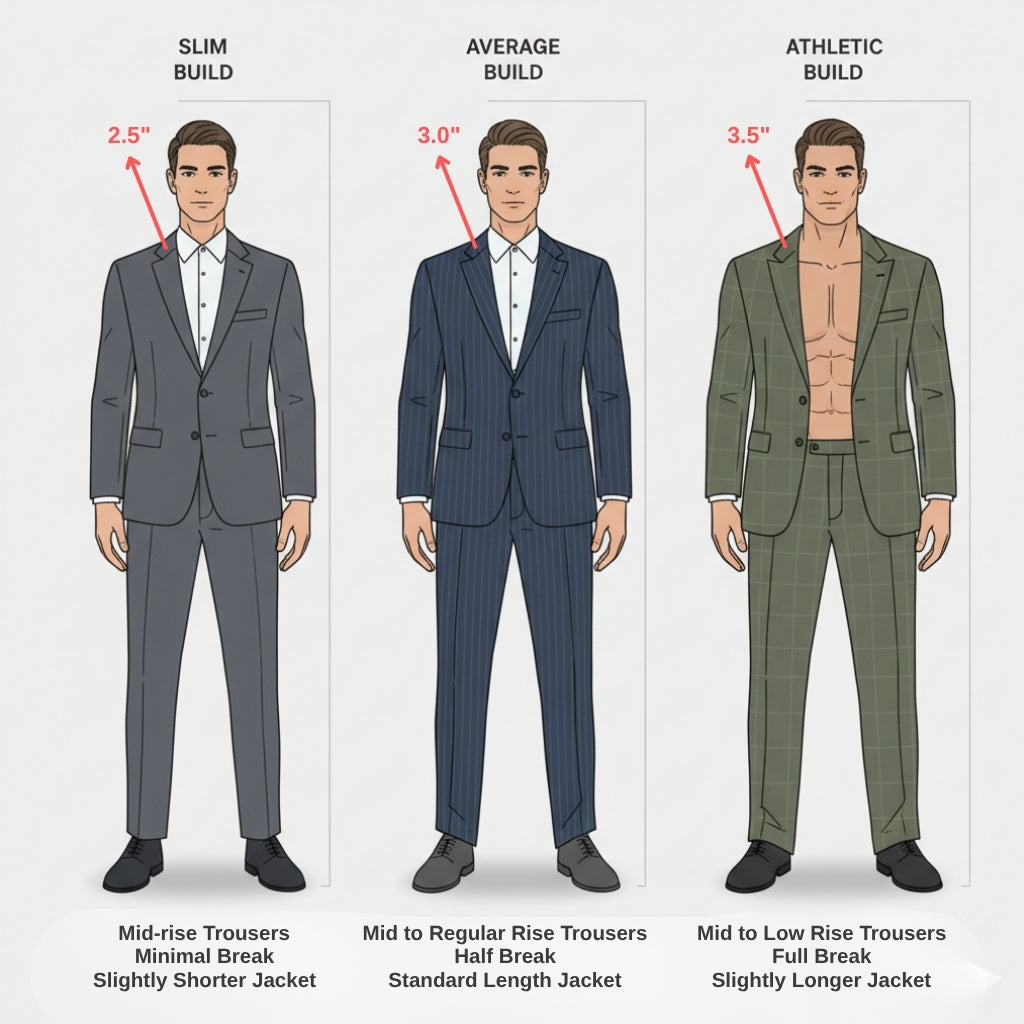
Mastering cocktail attire means understanding the rules well enough to apply them thoughtfully to your specific situation. Start with the classics—a well-fitted navy or charcoal suit, crisp white shirt, elegant tie, and polished leather shoes. From there, introduce personal style through fabric choices, subtle color variations, and carefully selected accessories.
The goal isn't to fade into the background or to demand attention through flash. Rather, cocktail attire done right allows you to feel confident, comfortable, and appropriately dressed for the celebration at hand. You're showing respect for the hosts, the event, and yourself through the care you've taken with your appearance.
Whether you're attending your first cocktail-attire wedding or refining your approach after dozens of formal events, the principles remain consistent: fit matters more than brand names, quality beats quantity, and subtle sophistication trumps obvious ostentation every time.

